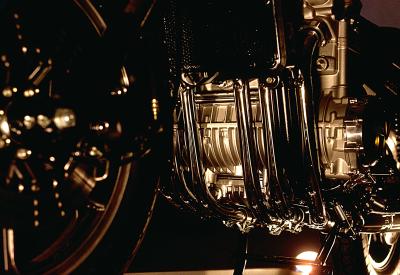
The T56 is a popular transmission used in a variety of high-power muscle cars by many manufacturers including Dodge, Ford, and General Motors. With a dual overdrive, high torque rating, and aluminum housing, it is strong, light and efficient. Bleeding a T56 transmission is an important part of maintenance, as air in the hydraulic system will keep the clutch from engaging, and also result in a soft and spongy clutch pedal. Unfortunately, the T56 transmission bleeder screw is located in a location that is very difficult to reach, making the bleeding process more complicated than on a typical car.
Park your car on level ground and engage the parking brake. Use a hydraulic jack to raise the vehicle and place it on jack stands. Open the hood and remove the cover on the clutch master cylinder.
Crawl under the car and orient yourself with the transmission. The bleeder screw is on the top of the transmission, tucked just underneath the driver's pedals. Reaching the screw will require use of a combination of ratchet, socket, and swivel extension with a shallow 11 mm socket to reach over the side of the transmission. You will not be able to see the screw; you will have to rely on touch.
Have a friend fully depress the clutch pedal. With the clutch pedal fully depressed, open the bleeder screw. You will feel air bubbles and fluid dribble out. Close the bleeder screw, then have your friend release the clutch pedal. Have the friend check the master cylinder; you want to make sure the fluid in the master cylinder stays at the full mark or you may suck air into the system, which will need to be bled out again. Top off the master cylinder with DOT-4 fluid as the level drops after each cycle of opening and closing the bleeder screw.
Repeat this process several times until you feel only fluid and no air bubbles coming out of the bleeder screw. If you keep your work area quiet, you can hear whether any air is escaping when you turn the bleeder screw. Once you only get fluid from the bleeder screw, you have purged the air from the T56's hydraulic system. Clean up the area around the bleeder screw and lower the car. Go for a ride and test the clutch pedal. it should now be firm and consistent. If it is still spongy or the clutch will not fully engage and disengage, you still have air in the system.